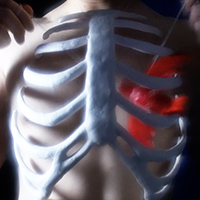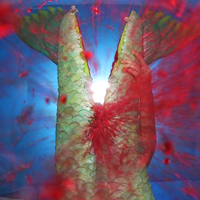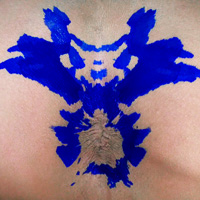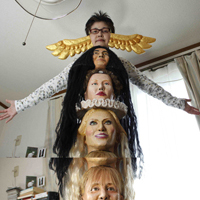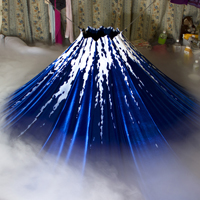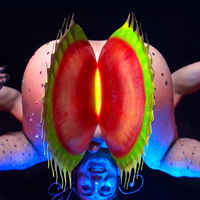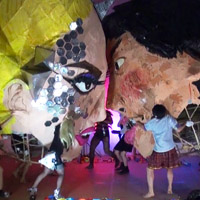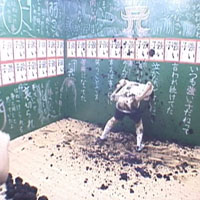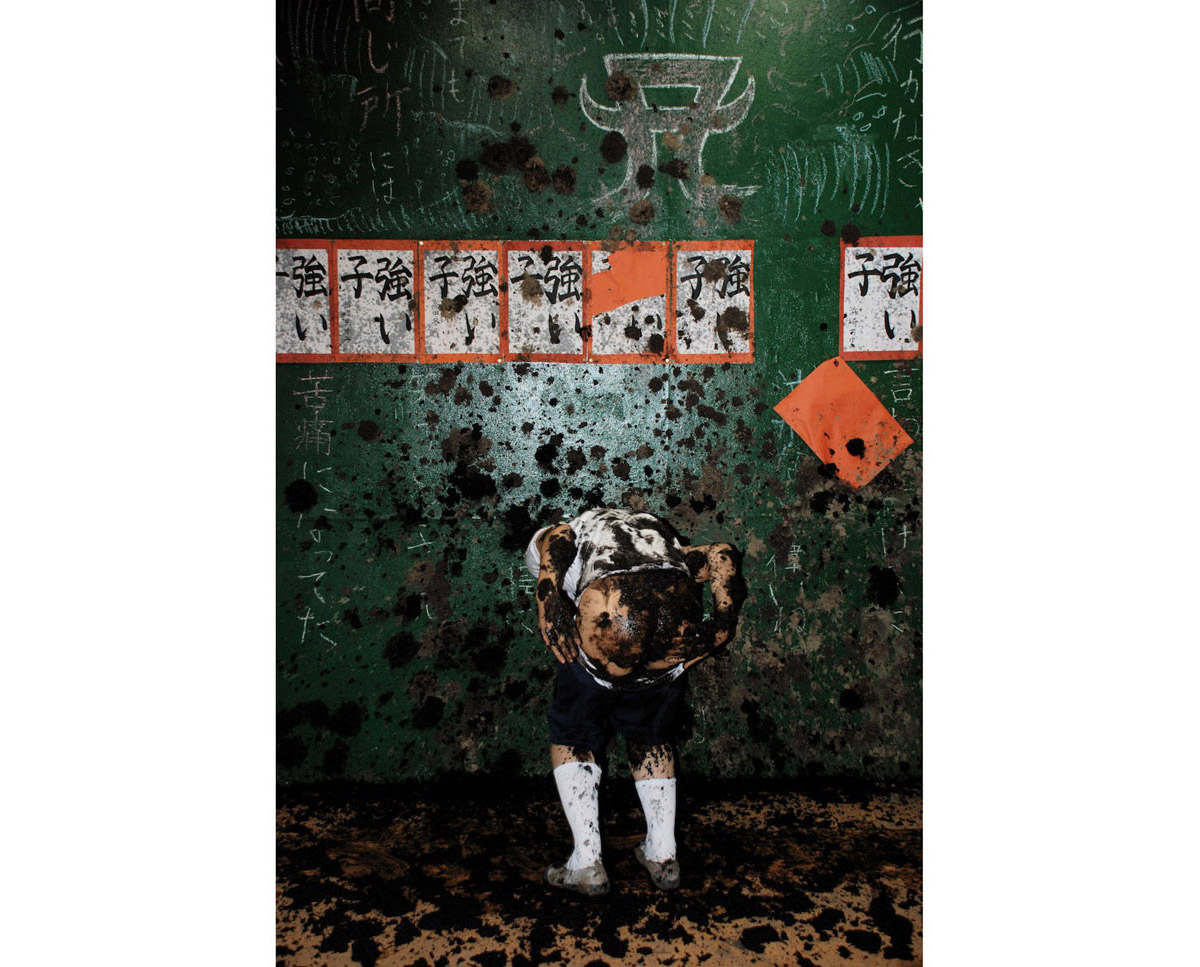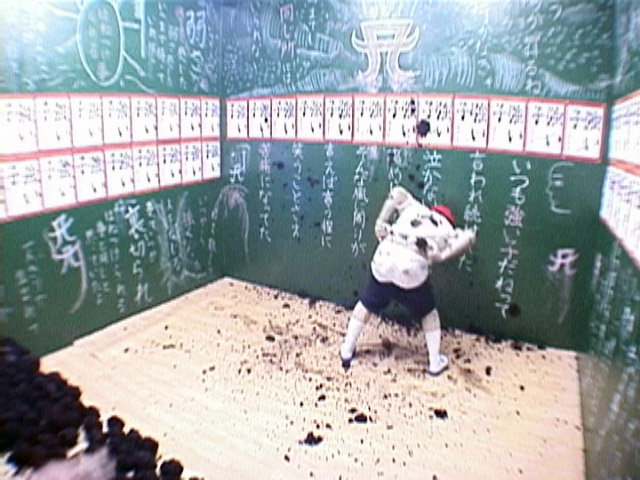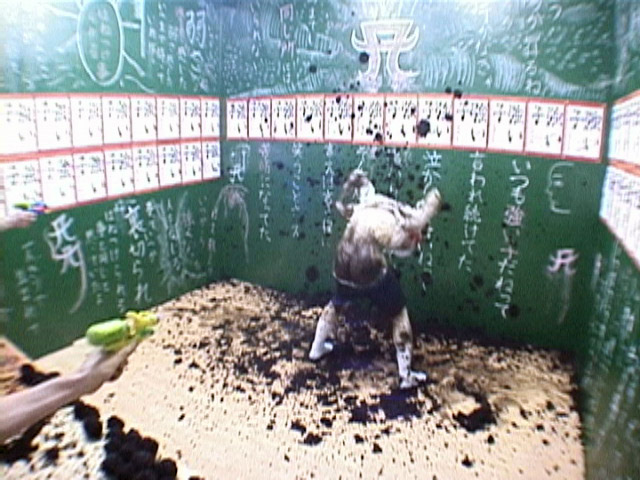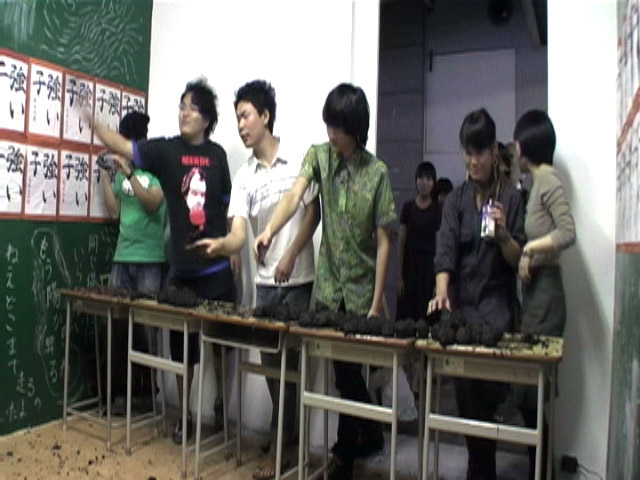この作品は、90年代末〜2000年代を代表する日本の女性ポップ歌手、浜崎あゆみの楽曲『A Song for XX』を下敷きに制作している。彼女はこの歌詞のなかで、彼女自身の子供時代のトラウマティックな暗い過去や、それにも負けず強く行きていく意志を表現し、「私にはあゆの気持ちがわかる」と言う当時の女子高生たちによって圧倒的な支持を受けた。(浜崎に限らず、当時の日本の若者文化には、鬱やトラウマといった暗さ、そしてその暗さに浸る痛々しいナルシズムが充満していたように思う。)
作者は、多感な思春期に浜崎あゆみの影響を受けた一ファンとして、彼女のトラウマとシンクロするべくこの作品を計画した。ちなみにタイトルの「強い子」は歌詞からの引用だ。
このパフォーマンスは、日本の典型的な教室をイメージしたインスタレーションの中で行われる。壁には「強い子」と書かれた習字が貼られ、チョークでこの曲の歌詞が書かれている。その中で、「A Song for XX」をBGMに、いじめられっ子に扮した作者が、お尻を露出して踊り続ける。観客はお尻に向けて泥団子を叩き付ける。
The inspiration for this work came from “A Song for XX” by Ayumi Hamasaki who is widely known as Ayu, a Japanese pop princess who led the J-pop scene in the late 1990s and 2000s. In the lyrics, she writes about her traumatic experiences and expresses her resilience for life. Her music was largely popular among high school girls, who could relate themselves to “Ayu”. (Not only present in the works of Ayumi Hamasaki, but throughout the youth culture in Japan in the 90s–2000s were dark themes such as depression and trauma, accompanied with equally dark and painful narcissism.)
As a big fan who was influenced by Ayumi Hamasaki during puberty, a most susceptible time of life, Takata planned this work to synchronize himself with her trauma. The artwork title “Strong Child” is taken from the song lyrics.
This performance takes place in an installation based on a typical Japanese classroom. On the wall is hung the Japanese calligraphy for “strong child” whilst the song lyrics are written in chalk. During the performance “A Song for XX” is played in the background as a bullied kid (played by the artist) dances, revealing his bare bottom. The audience (people in the video) throw mud pies at his exposed posterior.
強い子
"Strong Child"
2008 performance, installation, video and still photo
single channel video with sound,3min.sec.




